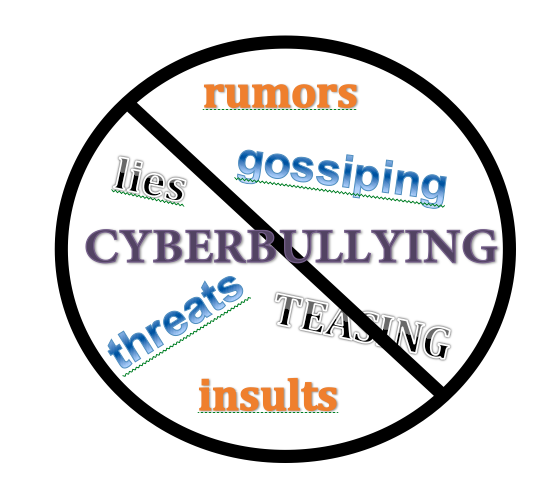
Working Together To Stop Bullying

Overview
Students will obtain multiple viewpoints on the issue of bullying and brainstorm possible solutions, with peers, educators, and parents, via video-conferencing. After collaborating with at least two individuals directly impacted by bullying, the class will create a “No Bullying” campaign based on solutions discussed during the video- conferences and the class discussions.
Learning Objectives
Students will:
- Be able to engage in a collaborative discussion, using a video conferencing tool, for the purpose of obtaining multiple viewpoints on an issue.
- Be able to compile information obtained from the video conference(s) into a shared document.
- Be able to compose specific questions regarding the topic to ask the guest(s)
- Be able to review the key ideas expressed by the guests and draw logical conclusions based on the information obtained.
Vocabulary
Vocabulary Words:
- Collaboration: Collaboration is the action of working with someone to produce or create something.
Pre-planning
To prepare for this lesson:
- The teacher will need to be familiar with the collaboration tool they choose to have students use (e.g. Google Meets, Zoom or Skype).
- The teacher will need to schedule video conferences with several individuals affected by bullying (e.g.: parents, victims of bullying, school principals, reformed bullies, etc.).
- Please note that children should be monitored by an adult whenever engaging in a video conference. Teachers should check with their district technology leader prior to engaging in a video conference.
- If using Google Meet - In schools, users must be 13+ or led by a teacher.
- Watch this tutorial 9+ AMAZING Google Meet Tips You Should Know (in 2023)!
Accommodations
See the Accommodations Page and Charts on the 21things4students website in the Teacher Resources.
Steps
Directions for this activity:
-
The teacher will lead a whole group discussion about bullying and the negative effects that bullying can have on a classroom.
-
The teacher will introduce the idea of video-conferencing and let students know that they will be meeting with to discuss their experiences with bullying. The teacher will also share that the goal of the discussion is to learn more about the ways in which bullying affects others and to create a No Bullying campaign for their classroom, designed to keep all students safe.
-
Within small groups, students will brainstorm specific questions to ask each of the guests with whom they will be video-conferencing. It may be helpful for students to decide who will ask a given question, in order to reduce confusion during the actual video-conference call.
-
Using a video-conferencing tool, such as Zoom, Skype, or Google Meet, students will discuss their questions and concerns regarding bullying.
-
Additionally, students will brainstorm possible solutions and develop a plan for creating a No Bullying campaign within their classroom.
-
Students will compile notes and ideas from the discussion within a shared Google Document.
-
Students will work together to create a No Bullying campaign within their classroom based on the information and ideas shared. Examples: Creation of Anti-Bullying Posters, Creation of Short Public Service Announcement Videos, Persuasive Speeches, Persuasive Essays, etc.
Possible Extensions:
- Students could use information obtained during the video conferences in order to create a skit or presentation for younger students.
- Small groups of students might video conference with lower elementary classrooms in order to share what they learned about the effects of bullying and what the younger students might do to prevent bullying from happening in their classrooms.
Assessment Options
Different options for assessing the students:
- Observations
- Check for understanding
-
The teacher will informally assess students during the video-conference. If the teacher conducts a more formal evaluation, he/she may consider a checklist containing the following:
-
The student was an attentive listener, as evidenced by not talking when the guest was speaking and taking notes on information shared.
-
The student responded to questions in an appropriate manner.
-
The student was able to apply ideas gained from the discussion in order to voice ideas for ways in which his/her class might design a No Bullying campaign.
-
MITECS COMPETENCIES & ISTE STANDARDS
MITECS: Michigan adopted the "ISTE Standards for Students" called MITECS (Michigan Integrated Technology Competencies for Students) in 2018.
Global Collaborator
7b. Use collaborative technologies to work with others, including peers, experts or community members, to examine issues and problems from multiple viewpoints.
Devices and Resources
Device: PC, Chromebook, Mac, iPad
Browser: Chrome, Safari, Firefox, Edge, ALL
Websites:
Google Hangouts
CONTENT AREA RESOURCES
ELA
-
CCSS.ELA-LITERACY.SL.5.1- Engage effectively in a range of collaborative discussions (one-on-one, in groups, and teacher-led) with diverse partners on grade 5 topics and texts, building on others' ideas and expressing their own clearly.
-
CCSS.ELA-LITERACY.SL.5.1.A - Come to discussions prepared, having read or studied required material; explicitly draw on that preparation and other information known about the topic to explore ideas under discussion.
-
CCSS.ELA-LITERACY.SL.5.1.B - Follow agreed-upon rules for discussions and carry out assigned roles.
-
CCSS.ELA-LITERACY.SL.5.1.C - Pose and respond to specific questions by making comments that contribute to the discussion and elaborate on the remarks of others.
-
CCSS.ELA-LITERACY.SL.5.1.D - Review the key ideas expressed and draw conclusions in light of information and knowledge gained from the discussions.
Math
Students may choose to create and administer a survey asking students questions regarding bullying. Collected data would then be analyzed and presented to key stakeholders (e.g., school administrators).
Credits
This task card was created by Jean Smith, Van Buren Public Schools. January 2018. Updated November 2023.


